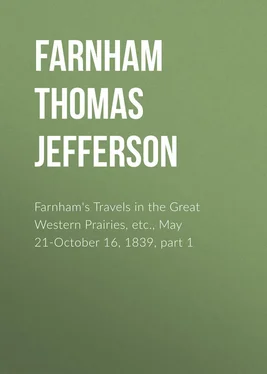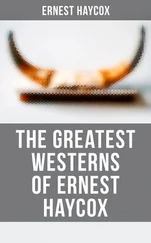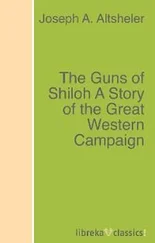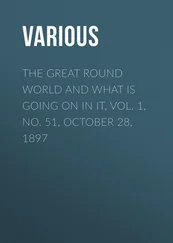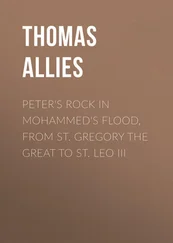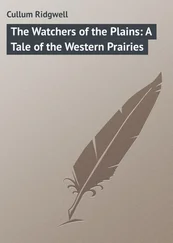Thomas Farnham - Farnham's Travels in the Great Western Prairies, etc., May 21-October 16, 1839, part 1
Здесь есть возможность читать онлайн «Thomas Farnham - Farnham's Travels in the Great Western Prairies, etc., May 21-October 16, 1839, part 1» — ознакомительный отрывок электронной книги совершенно бесплатно, а после прочтения отрывка купить полную версию. В некоторых случаях можно слушать аудио, скачать через торрент в формате fb2 и присутствует краткое содержание. Издательство: Иностранный паблик, Жанр: foreign_antique, foreign_prose, Путешествия и география, на английском языке. Описание произведения, (предисловие) а так же отзывы посетителей доступны на портале библиотеки ЛибКат.
- Название:Farnham's Travels in the Great Western Prairies, etc., May 21-October 16, 1839, part 1
- Автор:
- Издательство:Иностранный паблик
- Жанр:
- Год:неизвестен
- ISBN:нет данных
- Рейтинг книги:3 / 5. Голосов: 1
-
Избранное:Добавить в избранное
- Отзывы:
-
Ваша оценка:
- 60
- 1
- 2
- 3
- 4
- 5
Farnham's Travels in the Great Western Prairies, etc., May 21-October 16, 1839, part 1: краткое содержание, описание и аннотация
Предлагаем к чтению аннотацию, описание, краткое содержание или предисловие (зависит от того, что написал сам автор книги «Farnham's Travels in the Great Western Prairies, etc., May 21-October 16, 1839, part 1»). Если вы не нашли необходимую информацию о книге — напишите в комментариях, мы постараемся отыскать её.
Farnham's Travels in the Great Western Prairies, etc., May 21-October 16, 1839, part 1 — читать онлайн ознакомительный отрывок
Ниже представлен текст книги, разбитый по страницам. Система сохранения места последней прочитанной страницы, позволяет с удобством читать онлайн бесплатно книгу «Farnham's Travels in the Great Western Prairies, etc., May 21-October 16, 1839, part 1», без необходимости каждый раз заново искать на чём Вы остановились. Поставьте закладку, и сможете в любой момент перейти на страницу, на которой закончили чтение.
Интервал:
Закладка:
The next naval expedition, under the same Power, commanded by Bartoleme Ferrello, penetrated to the north as far as latitude 43°, and discovered Cape Blanco. 8 8 This relates to the voyage (1542-43) of Juan Rodriguez de Cabrillo. The leader of the expedition died upon one of the Santa Barbara Islands (January, 1543), but his pilot Bartolomé Ferrelo sailed farther north. The location of his northern point of exploration is given as 43°, which would be near Cape Blanco; but recent editors consider that there was an early error of calculation, and that Cape Mendocino is the more probable point. Ferrelo in all likelihood advanced as far as the southern boundary of Oregon. See translation of journal of the expedition, with valuable notes by H. W. Henshaw, in United States Geographical Surveys West of the One Hundredth Meridian (Washington, 1879), vii, pp. 293-314. – Ed.
Juan de Fuca discovered and entered the Straits that bear his name in the year 1592. He spent twenty days within the Straits in making himself acquainted with the surrounding country, trading with the natives, and in taking possession of the adjacent territories in the name of the Spanish Crown. 9 9 The voyage of Juan de Fuca is generally considered apocryphal. Greenhow, however, thinks it probable, from the correspondence of the straits now called by his name with the great passage he claimed to have entered. The only authority for the alleged voyage of De Fuca, who was a Greek pilot in the service of Spain, is the relation of Michael Lok, an Englishman, who claimed to have met De Fuca at Venice. Lok's story was published by Purchas in his Pilgrims (1625) and on its face was a bid for patronage from the English court. – Ed.
The Straits de Fuca enter the land in latitude 49° north, and, running {xi} one hundred miles in a south-easterly direction, change their course north-westwardly, and enter the ocean again under latitude 51° north. Thus it appears that Spain discovered the Oregon Coast from latitude 42° to 49° north two hundred and fifty-one years ago; and, as will appear by reference to dates, one hundred and eighty-four years prior to the celebrated English Expedition under Captain Cook. 10 10 For Cook's discovery of the Hawaiian Islands and his death thereupon, see Franchère's Narrative in our volume vi, p. 209, note 21. During his northward expedition he skirted the entire North-west Coast from Cape Mendocino to North Cape, in the Arctic Ocean, not finding, however, either the entrance to the Columbia or to Puget Sound. – Ed.
In 1602, and subsequent years, Corran and Viscaino, in the employment of Spain, surveyed many parts of the Oregon Coast, and in the following year Aguiler, in the same service, discovered the mouth of the Umpqua River in latitude 44° north. 11 11 The expedition commanded by Admiral Torribio Gomez de Corvan and Sebastian Vizcaino was equipped by the Mexican governor, Count de Monterey (1602). Corvan returned home from the harbor of Monterey, while Vizcaino with his lieutenant Martin Aguilar pushed northward. The identification of the headlands which they named, is now difficult. H. H. Bancroft, History of the North-west Coast (San Francisco, 1886), i, p. 148, concludes that neither Vizcaino nor Aguilar passed 42° latitude. Farnham's identification of the river described by Aguilar as the Umpqua appears to rest upon his own authority. – Ed.
In August, 1774, Parez and Martinez, under the Spanish flag, discovered and anchored in Nootka Sound. It lies between 49° and 50° of north latitude. 12 12 The account of the expedition of Juan Perez, who with his lieutenant Estévan Martinez penetrated to the northern end of Queen Charlotte's Island, and passed some months in a bay probably to be identified with Nootka Sound, was not given to the world by the Spaniards until years later; the English therefore considered themselves, in the person of Captain Cook, the discoverers of this portion of the North-west Coast. – Ed.
In 1774 and 1775 the north-west coast was explored by Parez and Martinez of the Spanish service, as far north as the 58th parallel of latitude. 13 13 This refers to the voyage of Bruno Heceta in 1775, Juan Perez being second in command. This expedition discovered the mouth of the Columbia and took possession for Spain of the entire North-west Coast from 42° to 55° of north latitude. – Ed.
On the 6th day of May, 1789, the Spanish Captain Martinez, commanding two national armed vessels, took possession of Nootka Sound and the adjoining country. {xii} Previous to this event, say the authorities referred to, no jurisdiction had been exercised by the subjects of any civilized power on any part of the north-west coast of America between 37° and 60° of north latitude.
Thus is it shown on how firm and incontrovertible data the Spanish claims rest to the prior discovery and occupancy of the Oregon Territory.
But as against England this claim was rendered if possible more certain by the treaty of February 10th, 1763, between Spain, England and France – by which England was confirmed in her Canadian possessions, and Spain in her discoveries and purchased possessions west of the Mississippi. If, then, England has any claim to Oregon as derived from Spain, it must rest on treaty stipulations entered into subsequently to the 10th of February, 1763.
We accordingly find her to have formed a treaty with Spain in the year 1800, settling the difficulties between the two powers in relation to Nootka Sound. By the first article of the convention, Spain agreed to restore to England those portions of the country around Nootka Sound which England {xiii} has so occupied in regard to time and manner as to have acquired a right to them. The 5th article stipulates as follows:
"5th. As well in the places which are to be restored to the British subjects by virtue of the first article as in all other ports of the North-West Coast of North America, or of the Island, adjacent, situate to the north of the coast already occupied by Spain wherein the subjects of either of the two Powers shall have made settlements since the month of April 1789, or shall hereafter make any. The subjects of the other shall have free access and shall carry on their trade without any disturbance or molestation." 14 14 This is a brief but imperfect résumé of what is known as the Nootka Sound controversy. Martinez seized three English vessels, and carried them as a prize to San Bias, Mexico. The English resenting this, war nearly ensued, but the difficulty was adjusted by the Nootka convention, signed October 28, 1790 (not 1800). The Washington State Historical Society has recently signalized this event by erecting a monument at Nootka Sound, containing the following inscription: "Vancouver and Quadra [English and Spanish representatives respectively] met here in August 1792 under the treaty between Spain and Great Britain of October 1790. Erected by the Washington University State Historical Society, August, 1903." The matter was not wholly adjusted until 1795. Consult Bancroft, North-west Coast , i, pp. 204-238; Greenhow, Oregon and California , pp. 185-215, and particularly W. R. Manning, "Nootka Sound Controversy," in American Historical Association Report , 1904, pp. 283-475. – Ed.
The inquiries that naturally arise here are, on what places or parts of the North-West Coast did this article operate; what rights were granted by it, and to what extent the United States, as the successors of Spain, in the ownership of Oregon, are bound by this treaty?
These will be considered in their order.
Clearly the old Spanish settlements of the Californias were not included among the places or parts of the North-West Coast on which this article was intended to operate, for the reason that England, the party in {xiv} interest, has never claimed that they were. But on the contrary, in all her diplomatic and commercial intercourse with Spain since 1800, she has treated the soil of the Californias with the same consideration that she has any portion of the Spanish territories in Europe. – And since that country has formed a department of the Mexican Republic, England has set up no claims within its limits under this treaty.
Читать дальшеИнтервал:
Закладка:
Похожие книги на «Farnham's Travels in the Great Western Prairies, etc., May 21-October 16, 1839, part 1»
Представляем Вашему вниманию похожие книги на «Farnham's Travels in the Great Western Prairies, etc., May 21-October 16, 1839, part 1» списком для выбора. Мы отобрали схожую по названию и смыслу литературу в надежде предоставить читателям больше вариантов отыскать новые, интересные, ещё непрочитанные произведения.
Обсуждение, отзывы о книге «Farnham's Travels in the Great Western Prairies, etc., May 21-October 16, 1839, part 1» и просто собственные мнения читателей. Оставьте ваши комментарии, напишите, что Вы думаете о произведении, его смысле или главных героях. Укажите что конкретно понравилось, а что нет, и почему Вы так считаете.
